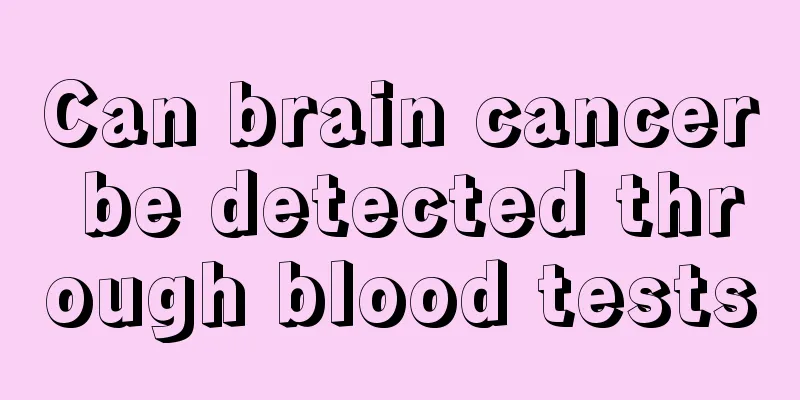What is the best way to treat hamartoma

|
Many patients have a strong desire to understand their diseases, although many of their families are unwilling to tell them the truth. For example, patients with hamartomas want to know what the treatments are, but they don’t know if they can be completely cured. So today we will learn about how to better treat hamartomas. We must first understand what hamartoma is and what types there are, because each type has different treatment methods, and then we can find the right treatment method for it. Hamartoma, also known as renal angiomyolipoma, is a benign tumor. It was considered rare in the past, but with the development of medical imaging, it has become very common. It can be a separate disease or a manifestation of tuberous sclerosis. 1. Pulmonary hamartoma is a piece of bronchial tissue that is inverted and detached during embryonic development and is surrounded by normal lung tissue. This part of tissue grows slowly and may not grow for a certain period of time, and then gradually develops into a tumor. Most cases of pulmonary hamartoma can be treated with tumor removal or wedge resection of the lung. If the tumor is located at the hilum of the lung, is huge, or is difficult to separate from the hilar bronchus and blood vessels, or has caused irreversible pathological changes in the distal lung tissue, lobectomy can be performed, and complete lung resection is rarely required. Whether it is tumor removal or lobectomy, there is no recurrence after surgery. 2. Renal Hamartoma: Renal Hamartoma, also known as renal angiomyolipoma, is a benign tumor. In recent years, the incidence has tended to increase, which may be related to the improvement of diagnostic technology. Renal Hamartoma can be an independent disease or accompanied by tuberous sclerosis, the latter of which is autosomal dominant. Its treatment methods include (1) Follow-up. Tumors <4cm do not need treatment, but close follow-up is required. (2) Embolization. Arterial embolization should first consider cases of bleeding. According to experience, the volume of the tumor does not shrink after embolization, but bleeding can be stopped. Superselective renal artery branch embolization is often used to protect some renal function (3) Nephron-sparing surgery: Tumors < 5 cm can be enucleated, especially those at the edge of the kidney (4) Nephrectomy: Giant renal hamartomas can be nephrectomized; if the lesion is bilateral, more consideration should be given to the preservation of renal function; in a few cases, there may be local and lymph node invasion, or even tumor thrombus invasion of large veins, showing malignant behavior, and nephrectomy should be performed (5) Renal transplantation or hemodialysis is only suitable for patients who have bilateral lesions leading to renal failure or tumor rupture and bleeding and must undergo bilateral nephrectomy. 3. Bile duct hamartoma: A hamartoma caused by an obstruction in the transformation of the bile duct plate into the bile duct during embryonic development and insufficient absorption. This disease is also known as von Meyenburg syndrome, which is characterized by multiple, uniformly sized cystic lesions surrounded by varying amounts of fibrous matrix. Surgical treatment is still the preferred method for this disease. Because hamartomas are often clearly demarcated from normal liver tissue, tumor removal can be selected. If the tumor is tightly adhered to the liver tissue, partial liver resection or liver lobectomy can be performed. Children's livers are mostly free of cirrhosis and have strong regenerative ability, which provides conditions for extensive liver resection. In fact, patients should pay attention to keeping a good mood, avoid being angry, eat more vegetables and fruits, keep bowel movements smooth, do not eat too much, eat 70% to 80% full, eat less beef, mutton, pork, dog meat, avoid eating greasy and heavy food, strong alcohol and spicy fried food, and eat light, nutritious food. Patients with hamartoma should avoid excessive force when working and doing housework, do not hold heavy objects, and do not do strenuous exercise to avoid increasing abdominal pressure and causing tumor rupture and bleeding. You can often do low-intensity exercises such as long-distance walking, regularly check kidney B-ultrasound, and pay attention to the size of the tumor. |
<<: What is the best time to treat hamartoma
>>: Can hamartoma be prevented?
Recommend
What measures should be taken to prevent liver cancer? 5 ways to keep you away from liver cancer
The liver is a very important organ in the human ...
How to correctly guide children's premature love
Especially after puberty, boys and girls will dev...
How to remove rust from white clothes
It is very common in daily life for clothes to be...
How are pigmentation spots formed
There probably is no woman who wants to be spotte...
What are the symptoms of ovarian cancer
Since ovarian malignant tumors grow rapidly, clin...
Seaweed and Barley Porridge
In fact, seaweed appears very frequently on our d...
How to provide good care for patients with advanced brain cancer
Many brain cancer patients develop into advanced ...
How to remove oil stains from clothes
Washing clothes is a very troublesome thing, espe...
How to deal with lamb kidneys
Whenever there is a big festival, such as Chinese...
Can royal jelly remove freckles?
As people get older, various skin phenomena follo...
How long is the shelf life of sunscreen?
Because summer is coming soon and the weather is ...
How long does it take to be hospitalized for nasopharyngeal cancer treatment?
How long does it take to be hospitalized for naso...
What's wrong with my tight stomach
The human body is a very wonderful and magical or...
My throat and neck feel uncomfortable and tight
Discomfort and tightness in the throat and neck m...
The hazards of sodium hyaluronate
Many cosmetics contain sodium hyaluronate. Long-t...









